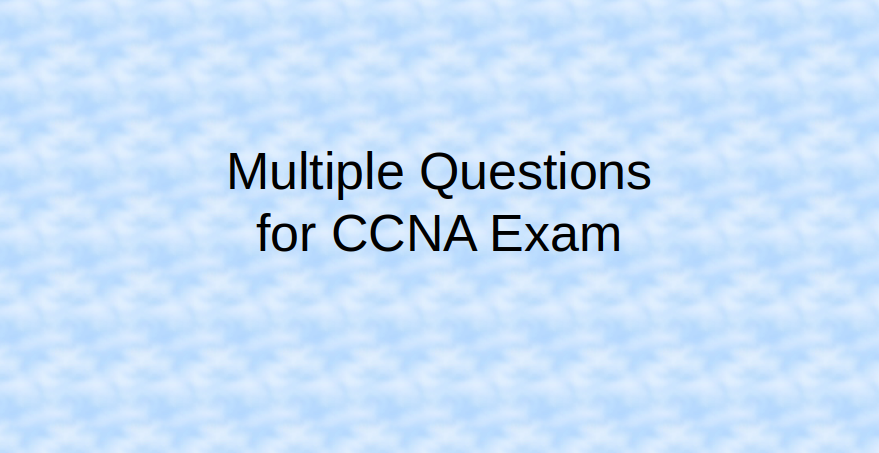Contents of this article
This blog contains a 10 questions mcq for internetworking. you can check your knowledge about internetworking basic by playing the below quiz . you need to select the correct answer from below quiz. There is a button at the end of this page to check your result. The button will show you your score and correct answers. You can check your knowledge about the internetworking basics.
-
1. The quantity of data segments that the transmitting machine is allowed to send without receiving an acknowledgment for them is called
A) A Window.
B) A Segment.
C) A packet.
D) none of the above.
-
2. What is Used to transport user data through the internetwork
A) Data segments.
B) Data Bits.
C) Data packets.
D) Data Frame.
-
3. What is Used to update neighboring routers about the networks connected to all routers within the internetwork ?
A) Route update stream.
B) Route update Frames.
C) Route update Data.
D) Route update packets.
-
4. The biggest benefit of using switches instead of hubs in your internetwork is that each switch port is actually its own ___________ ?
A) Data Transmission zone.
B) Collision and Broadcast domain
C) Broadcast domain.
D) Collision domain.
-
5. Physical layer does two things choose from the following ?
A) It sends packets and receives packets.
B) It sends bytes and receives bytes.
C) It sends bits and receives bits.
D) None of the above.
-
6. In a hub network ?
A) Devices share the same bandwidth.
B) Bandwidth divided as per user.
C) Bandwidth decreases according the number of users.
D) None of the above.
-
7. Ethernet networking uses ?
A) FDDI.
B) TKIP.
C) CSMA/CD.
D) CHAP.
-
8. The MAC, or hardware, address is a ?
A) 46-bit.
B) 42-bit.
C) 32-bit.
D) 48-bit.
-
9. 10Base5 also known as ?
A) Thinnet.
B) Ethernet.
C) Thicknet
D) none of the above
-
10. 10BaseT is known for ?
A) Co-axial connector
B) RJ45 connector.
C) Fibre cable connector.
D) none of the above
I hope you found this mcq for internetworking quiz interesting and useful. For any query or suggestions you may drop a comment below or contact us. Read more articles for CCNA on this site. Share this webpage in your social circle by the icons below.
